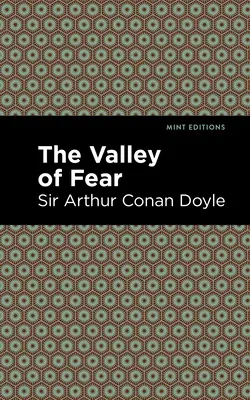"Holmes has taken on a life of his own in the hearts and minds of a
modern world" -The Times
"Start a story by Conan Doyle and you cannot stop reading, whether you
are ten or sixty."-Michael Dirda
"The immense talent, passion and literary brilliance that Conan Doyle
brought to his work gives him a unique place in English
letters."-Stephen Fry
Arthur Conan Doyle's The Valley of Fear (1915) is the fourth and
final installment of the Sherlock Holmes crime novels. This work of
riveting suspense and intrigue is loosely based on the infamous 18th
Century Irish secret society, The Molly Maguires. First published in
serial form in The Strand Magazine in 1914 and 1915, this novel brings
Sherlock Holmes face-to-face with the evil Professor Moriarty, one of
the most nefarious characters of crime fiction.
The Valley of Fear, much like the first Sherlock Holmes novel (A
Study in Scarlet) is told in two parts; the first is the bewildering
mystery of a murder at a remote English estate, and the second section
is told by the man initially thought to be the murder victim, set in the
Midwest of the United States. When Sherlock Holmes receives a cipher
message at Baker Street, he quickly deciphers its message- that John
Douglas, the resident of a remote estate in Sussex is in danger. Soon
after decoding the letter Holmes is visited by a policeman and friend
who informs him that Douglas has been murdered at Birlstone, the estate.
When Holmes and Watson arrive at the scene they are met with a
bewildering array of clues, including a disfigured body, bloody
footprints, and a missing dumb-bell. When the house servants are
interrogated it becomes clear that there is a conspiracy that extends to
a secret society called The Freeman, in a Western coal mining town in
the United States. The second part of the book moves to the story of the
mafia-like gang in the wild west, and ultimately to Holmes's nemesis,
the infamous Professor Moriarty.
With an eye-catching new cover, and professionally typeset manuscript,
this edition of The Valley of Fear is both modern and readable.


